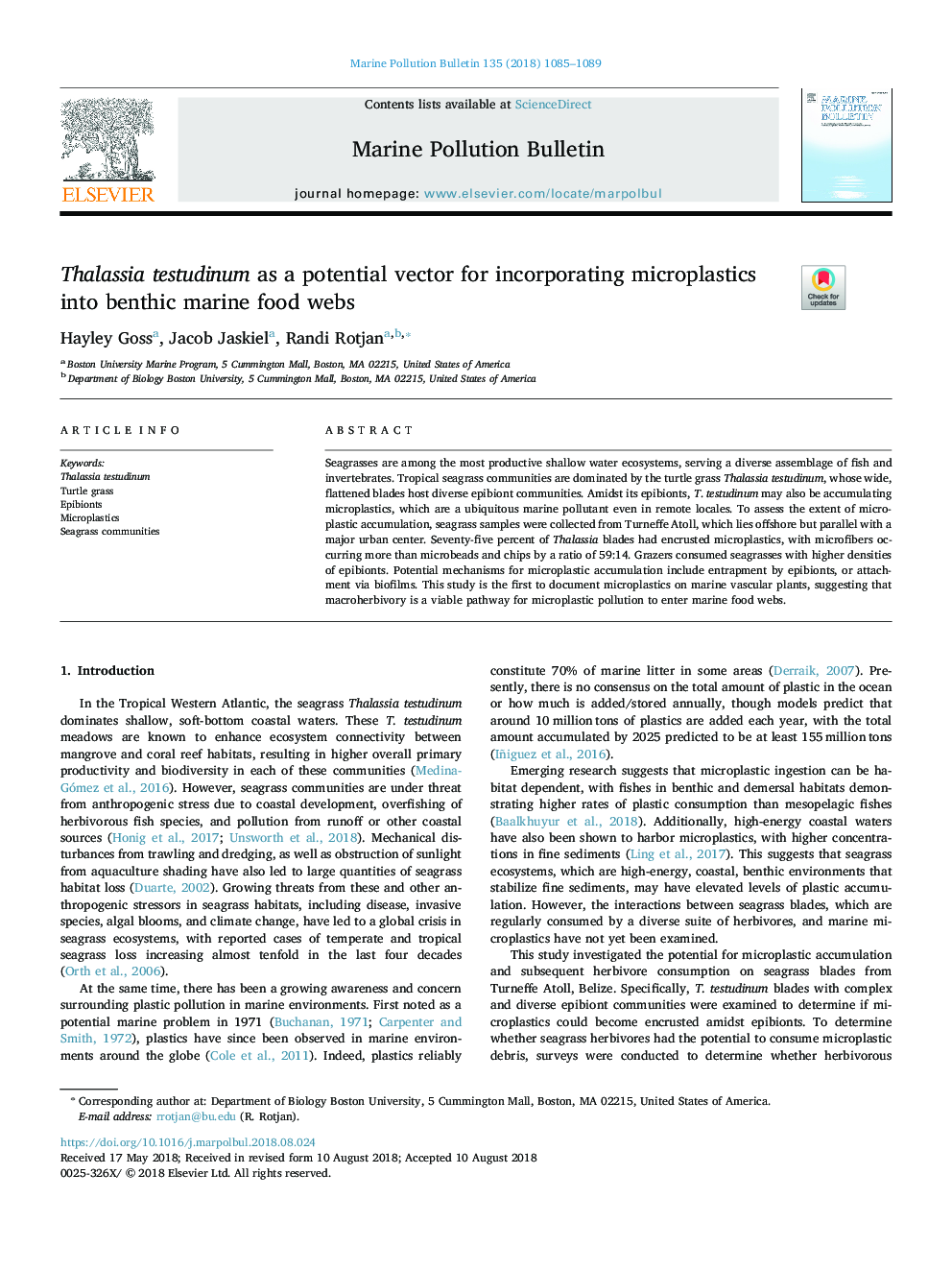| کد مقاله | کد نشریه | سال انتشار | مقاله انگلیسی | نسخه تمام متن |
|---|---|---|---|---|
| 10115879 | 1622700 | 2018 | 5 صفحه PDF | دانلود رایگان |
عنوان انگلیسی مقاله ISI
Thalassia testudinum as a potential vector for incorporating microplastics into benthic marine food webs
ترجمه فارسی عنوان
تلالاتسیوم تلاسیا به عنوان یک بردار بالقوه برای ترکیب میکروپلاستی به شبکه های مواد غذایی دریایی بنتون
دانلود مقاله + سفارش ترجمه
دانلود مقاله ISI انگلیسی
رایگان برای ایرانیان
کلمات کلیدی
موضوعات مرتبط
مهندسی و علوم پایه
علوم زمین و سیارات
اقیانوس شناسی
چکیده انگلیسی
Seagrasses are among the most productive shallow water ecosystems, serving a diverse assemblage of fish and invertebrates. Tropical seagrass communities are dominated by the turtle grass Thalassia testudinum, whose wide, flattened blades host diverse epibiont communities. Amidst its epibionts, T. testudinum may also be accumulating microplastics, which are a ubiquitous marine pollutant even in remote locales. To assess the extent of microplastic accumulation, seagrass samples were collected from Turneffe Atoll, which lies offshore but parallel with a major urban center. Seventy-five percent of Thalassia blades had encrusted microplastics, with microfibers occurring more than microbeads and chips by a ratio of 59:14. Grazers consumed seagrasses with higher densities of epibionts. Potential mechanisms for microplastic accumulation include entrapment by epibionts, or attachment via biofilms. This study is the first to document microplastics on marine vascular plants, suggesting that macroherbivory is a viable pathway for microplastic pollution to enter marine food webs.
ناشر
Database: Elsevier - ScienceDirect (ساینس دایرکت)
Journal: Marine Pollution Bulletin - Volume 135, October 2018, Pages 1085-1089
Journal: Marine Pollution Bulletin - Volume 135, October 2018, Pages 1085-1089
نویسندگان
Hayley Goss, Jacob Jaskiel, Randi Rotjan,
